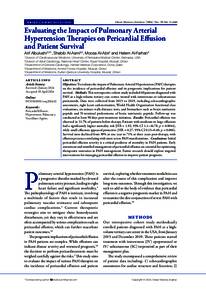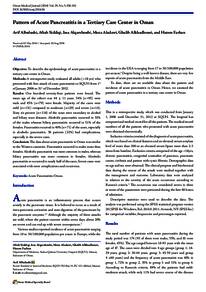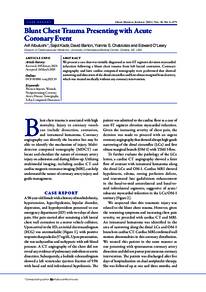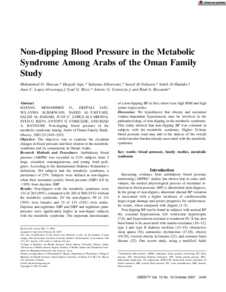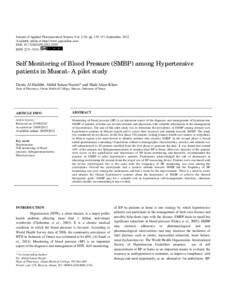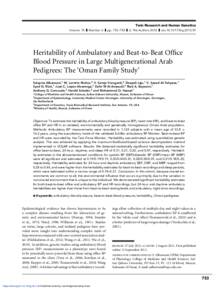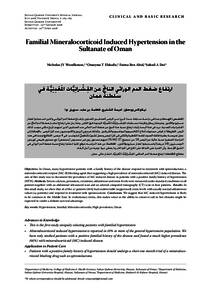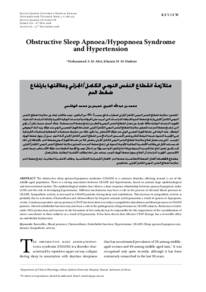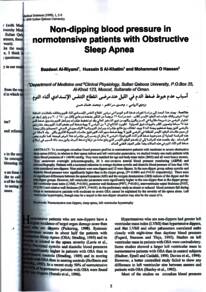Document
Evaluating the impact of pulmonary arterial hypertension therapies on pericardial effusion and patient survival.
Identifier
DOI 10.5001/omj.2024.82
Source
Oman Medical Journal, v. 39, no. 3, e640 p. [1-4].
Contributors
Country
Oman
City
Muscat
Publisher
Oman Medical Specialty Board.
Gregorian
2024-05-01
Language
English
Subject
English abstract
To evaluate the impact of Pulmonary Arterial Hypertension (PAH) therapies
on the incidence of pericardial effusion and its prognostic implications for patient
survival. Methods: This retrospective cohort study included 60 patients diagnosed with
PAH at a high-volume tertiary care center, treated with intravenous or subcutaneous
prostanoids. Data were collected from 2015 to 2019, including echocardiographic
assessments, right heart catheterization, World Health Organization functional class
evaluations, six-minute walk distance tests, and biomarkers such as brain natriuretic
peptide and N-terminal prohormone of brain natriuretic peptide. Follow-up was
conducted at least 90 days post-treatment initiation. Results: Pericardial effusion was
observed in 31.7% of patients before therapy. Patients with moderate to large effusions
had a significantly higher mortality risk (HR = 1.92; 95% CI 1.1–44.78; p = 0.0044),
while small effusions appeared protective (HR = 0.27; 95% CI 0.15–0.48; p = 0.006).
Survival rates declined from 89% at one year to 71% at three years post-therapy, with
effusion presence correlating with more severe PAH manifestations. Conclusions: Initial
pericardial effusion severity is a critical predictor of mortality in PAH patients. Early
assessment and stratified management of pericardial effusion are essential for optimizing
therapeutic outcomes in PAH management. Future research should explore targeted
interventions for managing pericardial effusion to improve patient prognosis.
ISSN
1999-768X (Print)
ISSN:2070-5204 (Electronic)
Category
Journal articles

